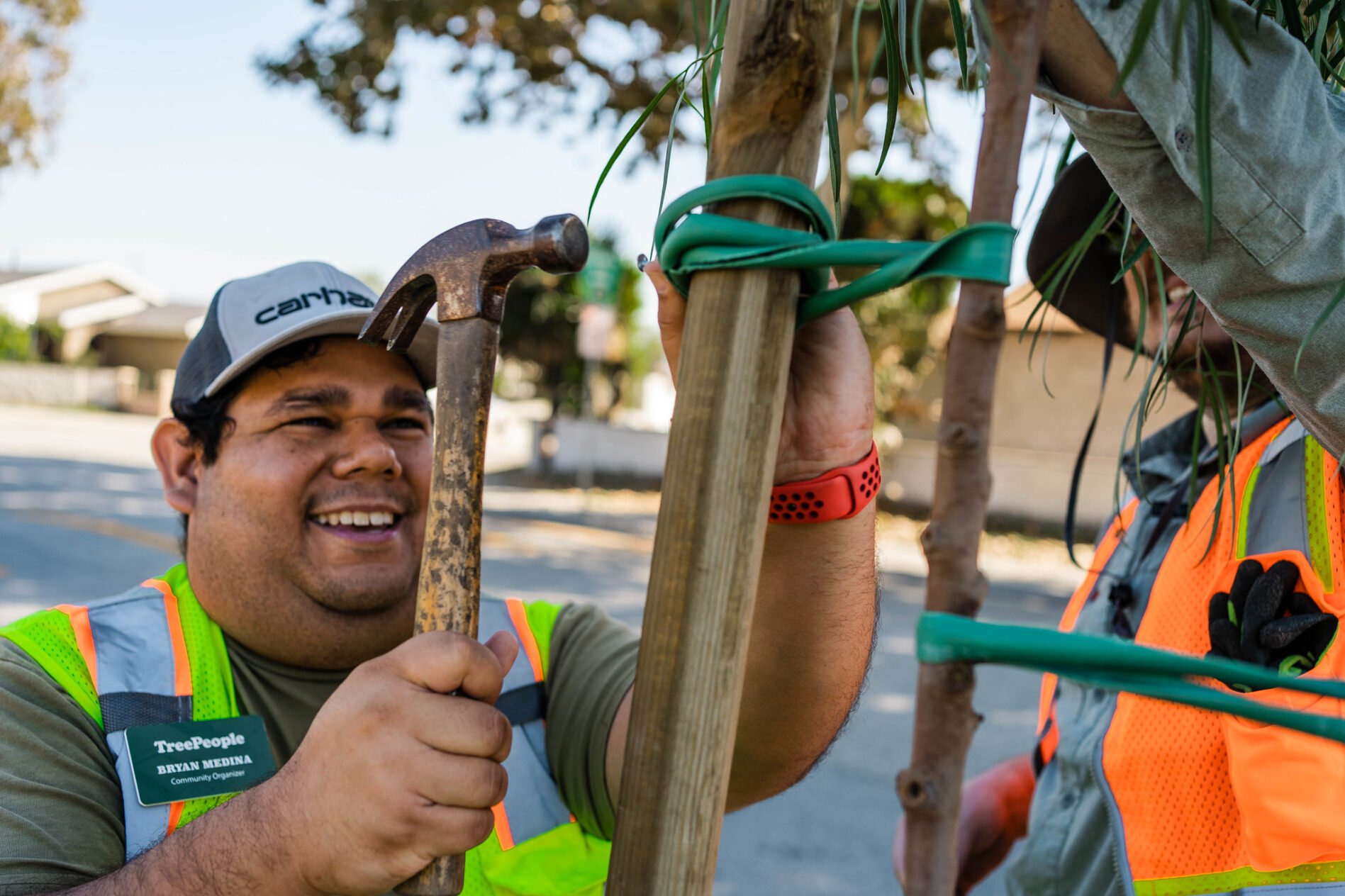Have you ever wanted to learn more about the trees and plants in your very own backyard? What are they called? And what positive impacts do they have on your life and in your neighborhood? TreePeople is partnering with the U.S. Forest Service to answer some of these questions, and we need your help.
At TreePeople, we plant hundreds of trees each year in neighborhoods that desperately need greater canopy cover to cool and protect their environment. Tools like our Los Angeles Tree Canopy Map Viewer help us and many of our partners understand how tree canopy varies across the region and where more trees are needed. Now, our Policy and Research team is collaborating on a new project that will help future tree planting projects be more beneficial for residents.
The U.S. Forest Service works on tree planting projects all over the United States. In partnership with TreePeople, they are conducting an environmental equity-focused study that seeks to understand if trees and biodiversity are improving the well-being of people in the Los Angeles area. The U.S. Forest Service uses sophisticated models to indicate who needs trees the most and why. These models incorporate environmental equity metrics such as urban canopy cover, income, air quality, heat vulnerability, access to public space, and many more to help them identify, locate and implement future tree planting projects.
Through this project, the Forest Service will evaluate and measure residential trees with the broader goal of equitably addressing tree canopy needs here in LA County and investigating how trees impact our well-being. Restoring the tree canopy means cooler cities, cleaner air, lower energy costs, and healthier, happier residents.
The first step of this study is to evaluate the trees, shrubs and biodiversity in yards across LA County. While we have access to excellent satellite imagery nowadays, satellites still lack the precision to tell us exactly which tree species are found in a given place, how large these trees are, and the condition they are in. This work has to be performed by experts on the ground, measuring and observing LA’s residential trees in the wild. Reader, that’s where you come in.
If you would like to support this study and learn more about what trees and shrubs you have growing in your own yard, join us! We are seeking volunteers to welcome a Forest Service research team for a 2-4 hour visit to measure the diversity of trees on their property. Both renters and homeowners are welcome to participate. As a thank you, you will receive a personalized report identifying the trees and large shrubs on your property and a summary of the environmental benefits your trees are working hard to provide every single day. Learn more and sign up here!

